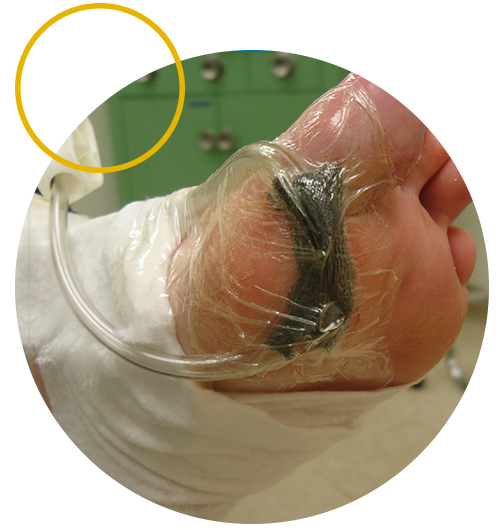
How it works
This therapy involves a special dressing (bandage), tubing, a negative pressure device, and canister to collect fluids. The dressing will then be sealed with a film. The film has an opening where a tube is attached. The tube leads to a vacuum pump and canister where fluids are collected. The vacuum pump can be set so that it is ongoing, or so it starts and stops intermittently. The vacuum pump pulls fluid and infection from the wound. This helps pull the edges of the wound together. It also helps the wound heal by promoting the growth of new tissue. When needed, antibiotics and saline can be pushed into the wound.
What it does
The system optimises blood flow in the wound bed and decreases local tissue swelling. It also removes excessive fluid that can slow cell growth and proliferation in the wound bed. The therapy decreases the numbers of bacteria. Additionally, intermittent low pressure alters the structure of the cells in the wound bed, triggers the rate of cell division and the formation of new tissue.
If you or the person you are caring for has a diabetic foot wound or ulcer that is open and is having difficulty healing, you can come in for an assessment.

Make An Appointment by clicking here.

Assessment with our doctors who are specialists in wound healing.

Debridement would be incorporated into the wound care plan, typically in the first stage.

Follow-ups with home nursing option

Better quality of life with closing wound